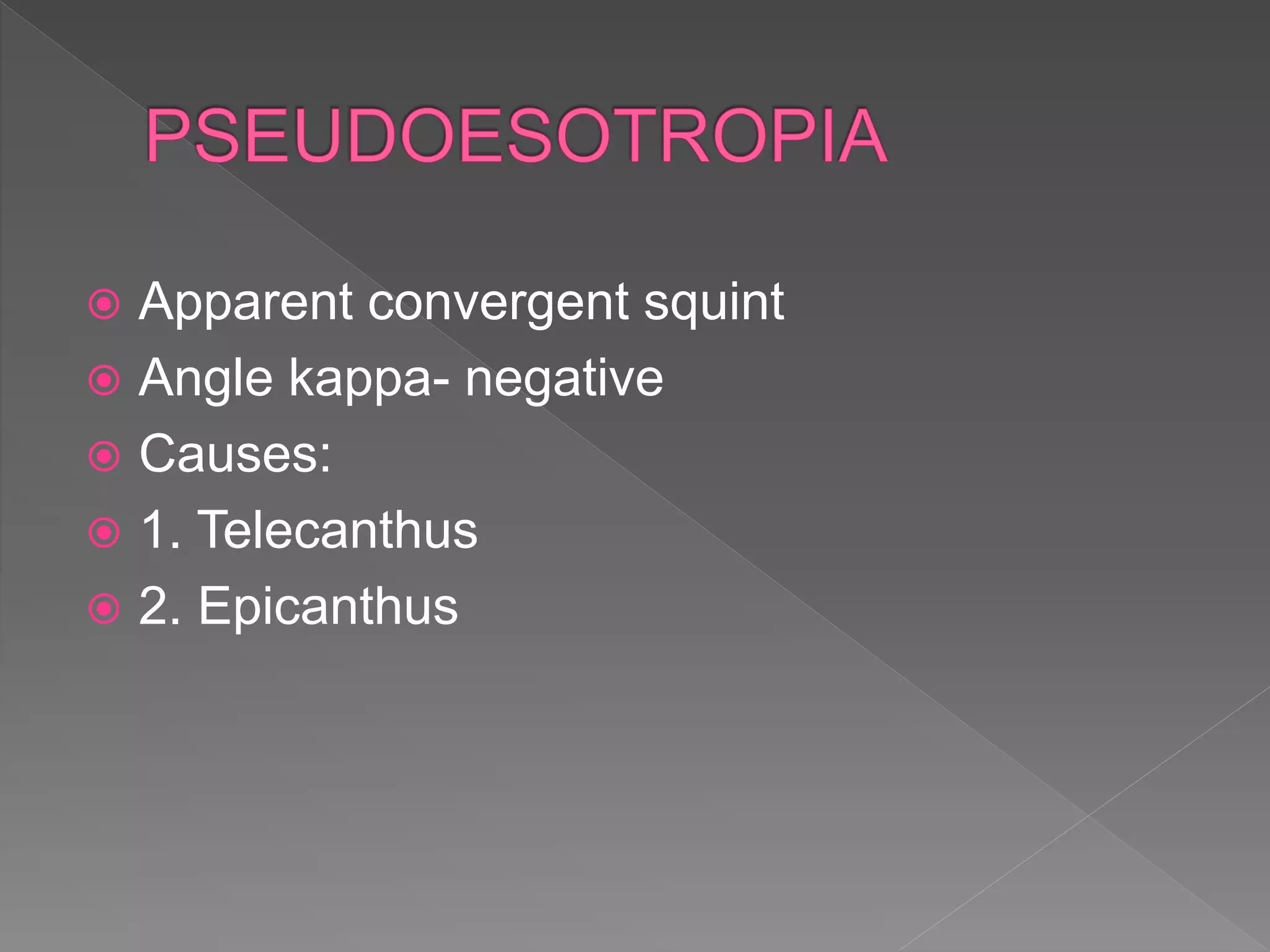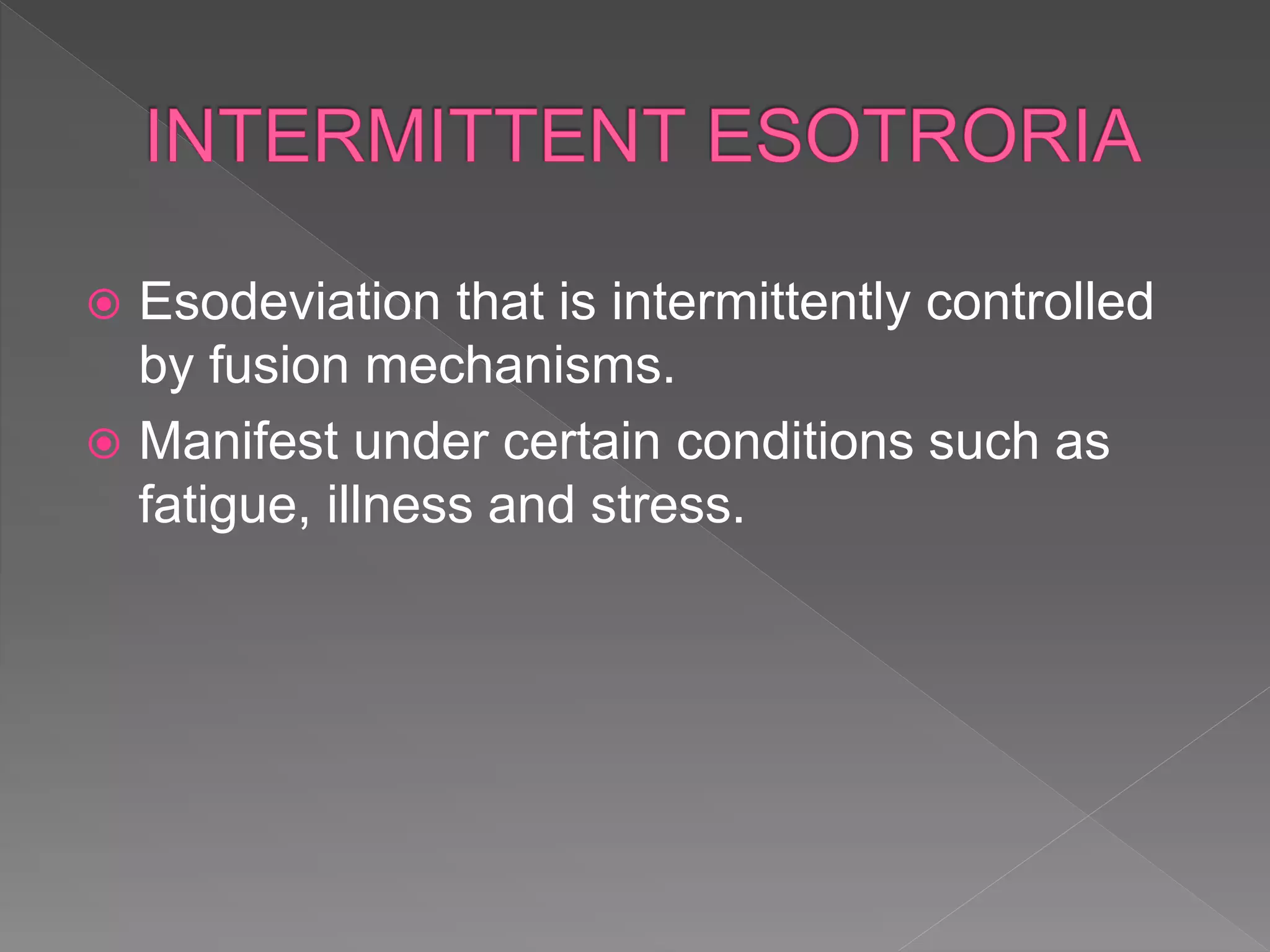This document discusses esotropia, which is an inward turning of one or both eyes. It defines esotropia and describes the different types including accommodative esotropia, congenital esotropia, and microtropia. It outlines the causes, characteristics, diagnosis, and management of each type of esotropia. Some key points covered include the role of accommodation and refractive error in accommodative esotropia, the importance of early treatment for congenital esotropia to prevent amblyopia, and the use of occlusion therapy, refractive correction, surgery, and botulinum toxin injection in the management of esotropia.























































































